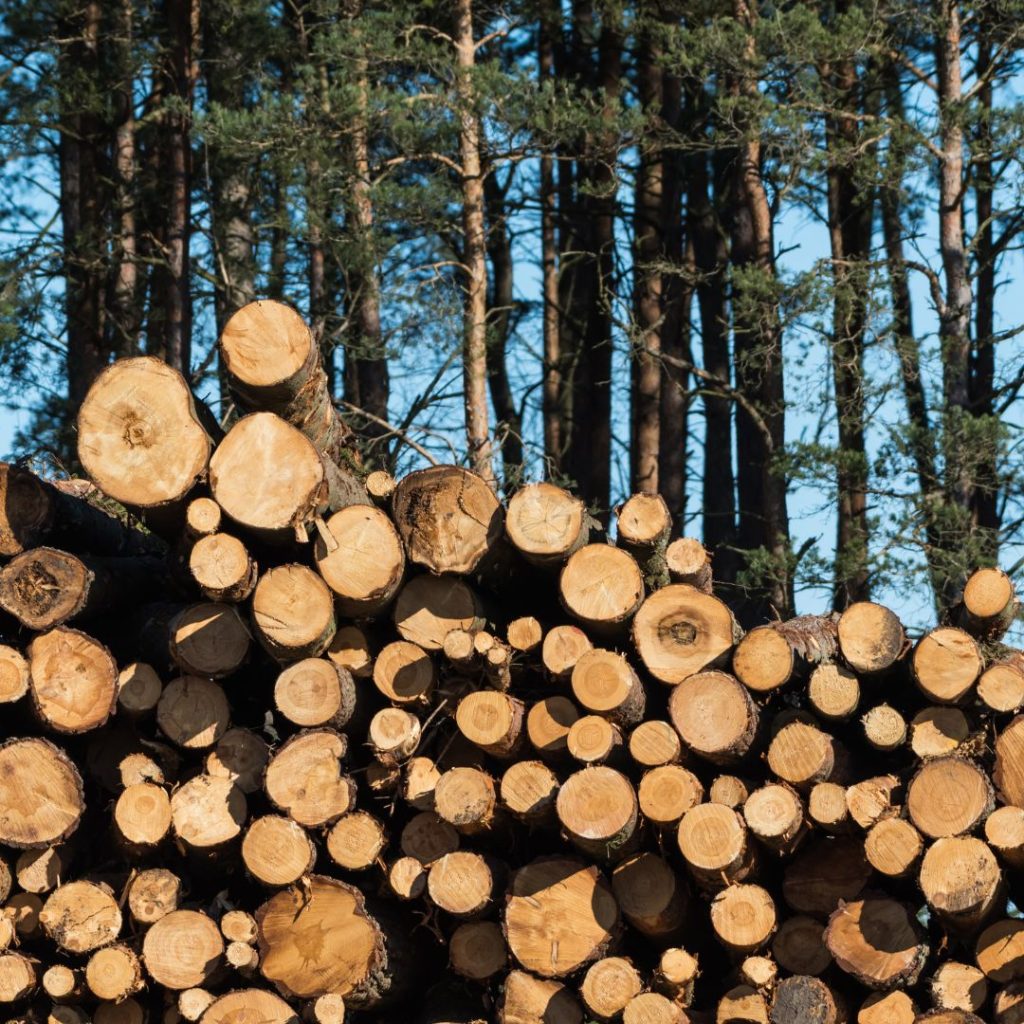Forest conversion and bioenergy go hand in hand

Currently, only a fifth of the wood harvested is hardwood, but the proportion of hardwood will increase in the future with forest conversion. In contrast to softwood, hardwood is increasingly being used for energy. So much for the future. Today, more biomass is available for bioenergy production due to bark beetle infestation and extreme weather conditions. Biomass plants are creating new markets for energy wood from forest management measures and thinning and have a stabilizing effect on prices. According to the Intergovernmental Panel on Climate Change, biomass is important for meeting the 1.5 degree target and offers great potential for replacing fossil fuels.
"There are major efforts to replace natural gas with renewable energy sources. We are seeing increasing demand for energy wood from households, the timber industry and the food industry," says Pfemeter. "As hardwood is used for energy production to a far greater extent than softwood, forest conversion will result in larger quantities of energy wood, which we can use to replace natural gas and oil," says Christoph Pfemeter, Managing Director of the Austrian Biomass Association, in a press release.
The advantage of using damaged wood and wood pulp residues over other biomass products is that there is no competition for agricultural land. For forest owners, the increased demand for biomass also leads to an expansion of their customer base for wood quality that is otherwise difficult to sell, especially in the case of beetle infestation or wind breakage.
Biomass is becoming the most important energy source in the climate plan
Increases in damaged wood can be put to good bioenergetic use
"The new logging report and the sharp rise in the proportion of damaged wood in logging in recent years show the importance of the bioenergy sector as a reliable partner for the forestry industry. Domestic biomass heating plants, wood-fired power plants and wood-fired heating systems in private households are important consumers of the dramatically increasing quantities of damaged wood as a result of global warming, which can often only be used to generate energy.
The demand for energy wood also ensures that weak wood and residual forest wood resulting from forest maintenance measures and thinning can be marketed and that these important interventions to create climate-friendly forests can be carried out at all," explains Pfemeter in view of the new timber harvest report (HEM) from the Federal Ministry of Agriculture, Forestry, Regions and Water Management.
Biomass plants have a price-stabilizing effect
The storage capacities of around 2,500 local and district heating plants and around 170 wood-fired power plants, which are available throughout Austria, help to ensure that damaged wood is processed and removed from the forest before the bark beetle spreads further. "Our biomass plants are able to use damaged wood of all qualities and tree species. This makes them an important balancing valve, which also has a price-stabilizing effect in view of the weak construction sector and subdued demand for sawlogs and industrial timber," says Pfemeter. "With climate change, the dangers of drought, bark beetles, storms and forest fires are increasing, especially for overaged pure stands. Our forest owners can only transform endangered stands into climate-fit, vigorous and stable mixed forests through regular maintenance interventions."
Bioenergy in Austria
More than half of the renewable energy used in Austria, Europe and worldwide is covered by bioenergy. The expansion of bioenergy is an important cornerstone in Austria's phase-out of oil and natural gas heating systems.
Wood fuels are based on residual materials and by-products that accumulate in the forest during forest management and the production of wood products. These would otherwise rot unused and release CO2 in the process. This makes bioenergy the cheapest sustainable fuel for renewable district heating. The heating of households, CHP plants and the energy supply of the wood industry require by far the lowest funding levels.
For every 1 cubic meter of wood used, 6 cubic meters of by-products are produced, which can also be used to generate energy. The energy recovery of these by-products generates by far the highest CO2 savings in by-product recycling.
According to the IPCC, the use of bioenergy in CHP plants is the basis for achieving negative emissions (BIOCCS, biochar), which are necessary to meet the 1.5 degree target, and at the same time supports the build-up of carbon stocks in forests (climate change adaptation, forest management, forest protection).






